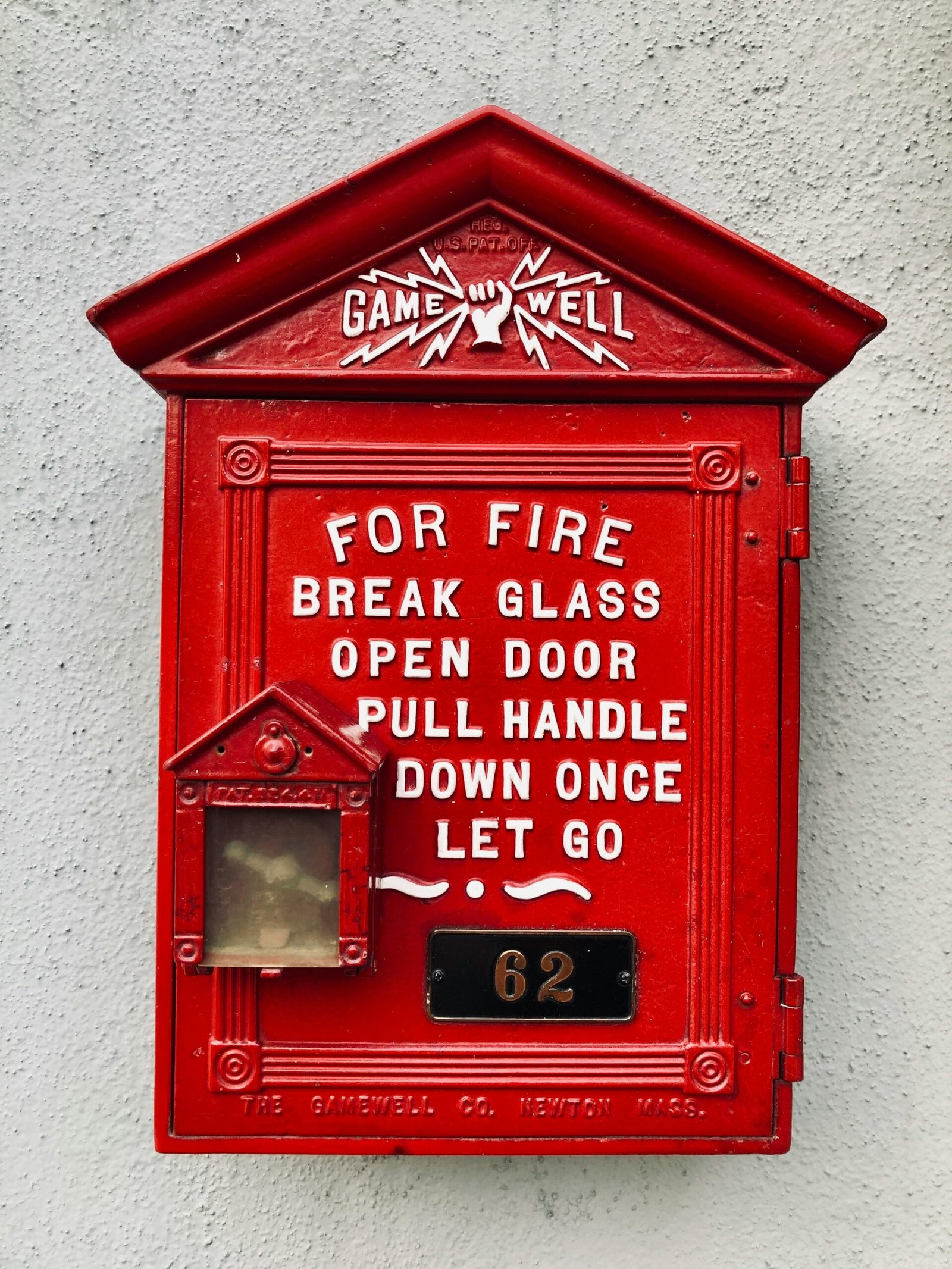In this article, you’ll discover valuable expert advice on gun safety measures in cars. Whether you are a gun owner or someone who frequently travels with others who own guns, it is crucial to prioritize safety at all times. We will explore the best practices for handling and storing firearms while in a vehicle, ensuring that you are well-informed and equipped with the knowledge to keep everyone safe.
Secure Storage Solutions
Lockable Gun Cases
When it comes to storing firearms in your vehicle, it is essential to prioritize security. One of the most effective ways to achieve this is by using lockable gun cases. These cases are designed to securely hold your firearms and prevent unauthorized access. Choose a lockable gun case that is made of sturdy materials, such as steel, and features a reliable locking mechanism. It is important to remember to always store your gun unloaded, with the ammunition stored separately.
Vehicle Gun Safes
Another secure storage solution for your firearm is a vehicle gun safe. These safes are specifically designed to fit in your vehicle and provide a high level of security. Look for a gun safe that is constructed with heavy-duty materials, such as steel, and has a secure lock. Some vehicle gun safes are even designed to be permanently attached to your vehicle, minimizing the risk of theft.
Locking Glove-Box Safes
If you prefer a more discreet storage option, consider a locking glove-box safe. These safes fit inside your vehicle’s glove compartment and provide secure storage for your firearm. Look for a locking glove-box safe with a solid construction and a reliable locking mechanism. It is crucial to ensure that the safe is securely attached to the vehicle to prevent unauthorized removal.
Proper Holstering Techniques
Holster Selection
Choosing the right holster is crucial for safe and secure firearm storage in your vehicle. Look for holsters that are specifically designed for vehicle use. These holsters are often made with durable materials and feature additional retention features to keep your firearm firmly in place. Consider factors such as comfort, accessibility, and retention when selecting a holster that meets your needs.
Retention and Accessibility
Proper retention and accessibility are key factors to consider when using a holster in your vehicle. The holster should securely hold your firearm in place, even during sudden movements or challenges on the road. Additionally, ensure that your firearm is easily accessible to you when needed, but not to unauthorized individuals. Strike a balance between accessibility and security to ensure safe handling of your firearm.
Holster Placement
Placement of your holster is another essential factor to consider for optimal safety. Ideally, choose a location that allows easy reach and retrieval of your firearm without compromising your ability to drive safely. Common locations for holster placement include the center console, under the steering column, or attached to the side of the seat. Practice drawing your firearm from the holster while seated to ensure comfortable and efficient access.

This image is property of images.unsplash.com.
Ammunition Handling
Separate Storage
When storing ammunition in your vehicle, it is crucial to keep it separate from your firearm. Store your ammunition in a dedicated container or box, preferably made of sturdy materials to prevent damage and potential hazards. Properly labeling the container can also help you quickly identify the type of ammunition it contains.
Properly Secured and Locked
Just as you secure your firearm, it is essential to ensure that your ammunition is properly locked and secured. Consider using lockable containers or boxes specifically designed for ammunition storage. This prevents unauthorized access and safeguards against accidental discharge.
Transporting Spare Ammunition
If you need to transport spare ammunition, it is important to do so safely and securely. Use a separate container specifically designed for ammunition transportation and ensure it is properly sealed and locked. Avoid leaving loose ammunition in the vehicle’s storage compartments, as this can lead to unintentional access or damage.
Educating Passengers
Gun Safety Rules
Educating your passengers about gun safety is crucial, especially if they are unfamiliar with firearms. Review the basic gun safety rules, such as always treating the firearm as if it’s loaded, keeping your finger off the trigger until ready to shoot, and never pointing the firearm at anything you do not intend to shoot. Emphasize the importance of following these rules, even if they are not handling the firearm directly.
Handling and Responsibility
If you allow passengers to handle your firearm, stress the need for responsible handling. Ensure they have a basic understanding of how the firearm operates and provide clear instructions on how to safely handle and store it. It is your responsibility to ensure they understand and follow proper gun safety practices.
Emergency Situations
Prepare your passengers for potential emergency situations, such as encountering a threat on the road. Discuss how you would handle such situations and explain the steps they should take to ensure their safety. Emphasize the importance of remaining calm and following your instructions in such circumstances.

This image is property of images.unsplash.com.
Childproofing Strategies
In-Car Gun Safety Locks
If you frequently travel with children, installing in-car gun safety locks is essential. These locks are designed to prevent unauthorized access to firearms by children. Consider locks that require a combination or a unique key to unlock, ensuring that only authorized individuals can access the firearm.
Secure Carrying Cases
Using secure carrying cases can significantly minimize the risk of accidental access to firearms by children. Look for cases specifically designed for secure storage and transportation, with child-resistant locking mechanisms. Always store both the firearm and ammunition separately and securely within the case.
Teaching Gun Safety to Children
Educating children about gun safety is paramount, regardless of whether you frequently travel with firearms. Teach children the importance of never touching a firearm without adult supervision and explain the potential dangers associated with firearms. Encourage children to report any encounter with a firearm to a trusted adult immediately.
Discreet Carrying Options
Concealed Carry Clothing and Accessories
If you prefer to carry your firearm on your person while in the vehicle, consider concealed carry clothing and accessories. These options are designed to discreetly hide your firearm while ensuring easy access when needed. Look for clothing with built-in holsters or accessories that allow you to securely and comfortably carry your firearm.
Under-Seat Holsters
Another discreet carrying option is an under-seat holster. These holsters are designed to be securely mounted under the vehicle seat, keeping your firearm within easy reach while concealed from plain sight. Ensure that the holster you choose is compatible with your vehicle and provides a secure and stable mounting solution.
Gun Safe Installation in Trunks
For an added layer of discretion and security, consider installing a gun safe in your vehicle’s trunk. This option provides you with a secure storage solution, hidden away from prying eyes. Ensure that the safe is specifically designed for vehicle use and securely mounted to prevent movement during travel.

This image is property of images.unsplash.com.
Maintenance and Regular Checks
Cleaning and Inspecting Firearms
Regular cleaning and inspection of your firearms are essential for safe and reliable operation, especially when stored in a vehicle. Develop a maintenance routine that includes removing any dirt or debris, lubricating moving parts, and inspecting for any signs of damage or wear. Clean and inspect your firearms regularly to ensure their optimal functioning.
Ensuring Proper Functioning
Before storing your firearm in your vehicle, ensure that it is in proper working condition. Test its functionality at a shooting range or in a controlled environment to confirm that it is reliable and functioning as intended. Regularly check and test the firearm’s components, such as the trigger, safety mechanisms, and sights, to ensure they are in good working order.
Replacing Faulty Parts
If you identify any faulty or worn-out parts during your regular checks, it is crucial to replace them promptly. Using a firearm with malfunctioning or damaged parts can compromise its performance and pose a safety risk. Always rely on qualified professionals for repairs or replacements to ensure the firearm remains in safe operating condition.
Awareness and Alertness
Staying Focused and Alert
When carrying a firearm in your vehicle, it is important to remain focused and alert at all times. Avoid distractions, such as using mobile devices excessively or engaging in activities that divert your attention from the road. Staying alert allows you to respond quickly and appropriately to potential dangers.
Situational Awareness
Developing situational awareness is crucial for maintaining a high level of safety while carrying a firearm in your vehicle. Be mindful of your surroundings, identify potential threats or suspicious activities, and adjust your driving accordingly. Situational awareness enables you to effectively anticipate and respond to potential risks.
Avoiding Distractions while Carrying
While driving, ensure that your focus remains on the road and the task at hand. Avoid engaging in activities that may distract you from safely operating your vehicle while carrying a firearm. Remember that your primary responsibility is to drive safely, and any distractions can compromise your ability to react promptly in an emergency situation.
Adherence to Local Laws
Understanding State Laws
Before carrying a firearm in your vehicle, educate yourself about the specific gun laws and regulations in your state. State laws can vary significantly regarding the transportation and storage of firearms. Familiarizing yourself with these laws will ensure that you comply with all legal requirements and avoid potential legal issues.
Concealed Carry Permits
If you plan to carry a concealed firearm in your vehicle, it is essential to obtain the necessary permits or licenses. Concealed carry laws differ from state to state, and some jurisdictions require permits to carry a concealed firearm. Ensure that you meet all the requirements and obtain the appropriate permits before carrying a concealed firearm in your vehicle.
Transportation Regulations
In addition to understanding state laws and concealed carry permits, familiarize yourself with any specific transportation regulations. Some states may have specific requirements regarding how firearms should be stored or transported in vehicles. Adhering to these regulations ensures that you are in full compliance with the law and helps maintain a safe environment for everyone.
Emergency Preparedness
Medical and First Aid Training
In addition to firearm safety, it is crucial to be prepared for medical emergencies. Consider undergoing medical and first aid training to acquire the necessary skills to respond to injuries effectively. Having this knowledge can be invaluable in the event of an accident, injury, or other medical emergencies.
Emergency Communication
Ensure that you have a reliable means of communication in case of emergencies. Keep a charged mobile phone with you at all times or consider investing in a reliable two-way radio system. Being able to communicate with emergency services or other individuals can greatly enhance the effectiveness of your response in critical situations.
Self-defense Strategies
While carrying a firearm in your vehicle can provide a means of self-defense, it is essential to also have a comprehensive understanding of self-defense strategies. Consider enrolling in self-defense courses or seeking instruction from qualified professionals. Learning techniques such as situational awareness, de-escalation, and self-defense tactics can empower you to protect yourself and others effectively.
By implementing these best practices, you can ensure the safe storage, handling, and transportation of firearms in your vehicle. Prioritizing gun safety measures helps protect yourself, your passengers, and the general public, fostering a secure environment for all. Remember, practicing responsible firearm ownership is not only your legal obligation but also a moral and ethical one.


